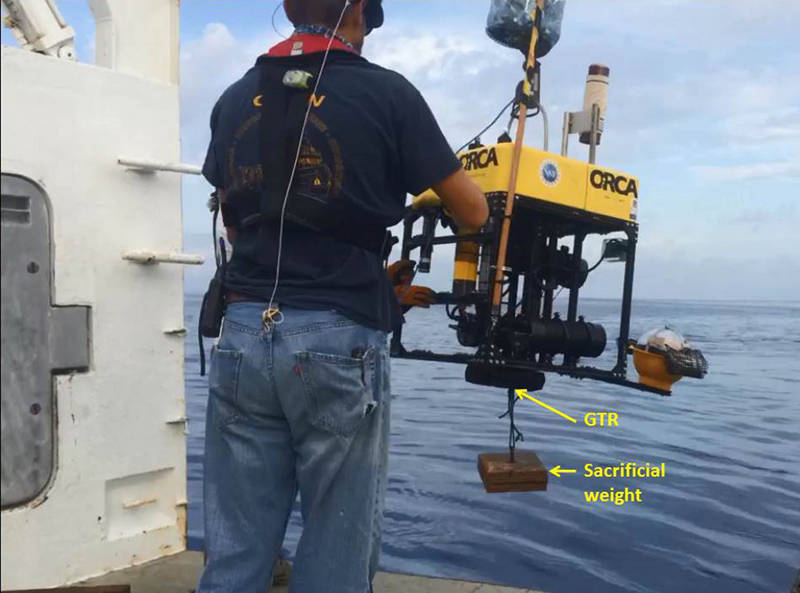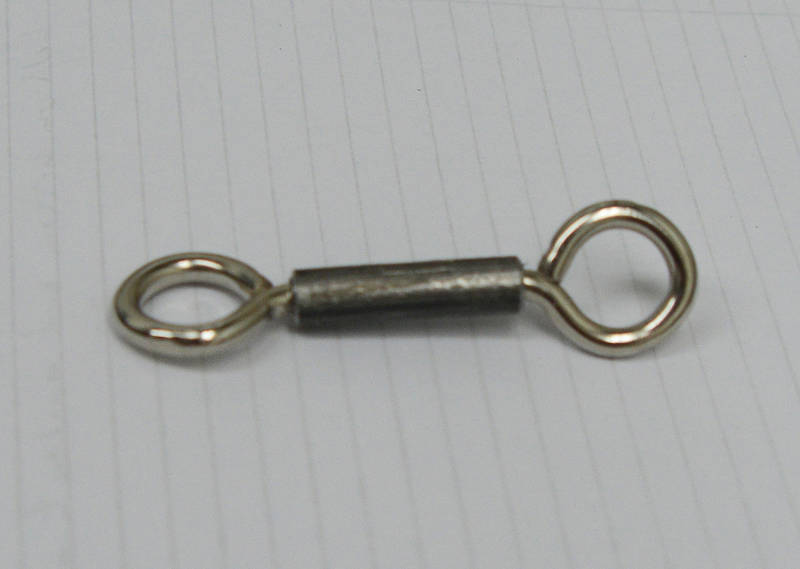
By Dr. Edie Widder - Senior Scientist, Ocean Research & Conservation Association
July 22, 2015

Last view of Medusa with legs removed and rigged in moored mode with sacrificial weight hanging about a foot below the base. Image courtesy of NOAA Bioluminescence and Vision on the Deep Seafloor 2015. Download larger version (jpg, 174 KB).
Medusa didn’t return from its second deployment. We sent the acoustic signal to drop its 75-pound sacrificial weight* and return to the surface at a little after 9 PM. From the depth that it is at, below 1,900 meters, it should take a couple of hours to reach the surface, but no such luck. Acoustic ranging indicated it was still on the bottom at 11 PM, when it should have been at the surface.
Plan B is a galvanized timed release (GTR) link between the weight and the Medusa. It is made out of two dissimilar metals that corrode at a predictable rate at a given temperature and salinity. In case the acoustic release fails, that link is supposed to dissolve and drop the weight. The ones we purchased were supposed to release the weight 28 hours after the deployment, which would have put the Medusa at the surface sometime after midnight – but once again – no luck. Ranging indicated it was still on bottom at 3 AM.

The galvanized timed release (GTR) link that should have corroded through in 28 hours to release the weight. Image courtesy of NOAA Bioluminescence and Vision on the Deep Seafloor 2015. Download larger version (jpg, 188.7 KB).
It was a tough call but we decided the best plan was to leave it and move on to our next dive site in order to avoid messing up the dive schedule that everyone else is depending on. We will keep checking the satellite data so if the Medusa pops up, we’ll see it and go back as soon as we can to collect it. If it still hasn’t popped up in two days, then we will go back and see if we can find it with the remotely operated vehicle (ROV). That won’t be easy even though we have accurate latitude and longitude positioning info and the ROV has sonar – it’s still a very big ocean.
If we find it, then what we do next will depend on what’s wrong. It’s a soft muddy bottom, so the lander could be stuck in the mud, in which case the ROV can pull it free. It’s also possible that the mud is anoxic enough that it prevented the galvanized timed release from corroding, so we may have to try to cut the line holding on the weight. The worst possibility is that it is a syntactic foam failure or a leak in one of the bottles, making it too heavy to come to the surface even once it drops its 75-pound sacrificial weight. In that case, we’ll have to figure a way to pull it up – not an easy proposition at that depth.
Assuming we can find it – it promises to be an exciting dive. At least the ROV pilots, Jamie and Tony, are looking forward to the challenge as an interesting break from trying to catch shrimp with the suction sampler.
*The sacrificial weight is made out of steel plates that will eventually rust away.